
Italian postcard by Ed. Soc. Anon. Bettini, Roma, no. 91. Photo: Riccardo Bettini, Roma.
Armando Falconi (1871-1954) was an Italian stage and screen actor. Though he was foremost a theatre actor and comedian, he had a prolific career as comedian in Italian cinema of the 1930s and early 1940s.

Italian postcard by Ed. Soc. Anon. Bettini, Roma, no. 117. Photo: Riccardo Bettini, Roma.
Polish actress Soava Gallone (1880-1957) was one of the divas of the Italian silent cinema.

Italian postcard by Ed. Soc. Anon. Bettini, Roma, no. 119. Photo: Riccardo Bettini, Roma.
Edy Darclea (1895-?) was an Italian actress who was active in Italian and foreign silent cinema in the late 1910s and early 1920s.
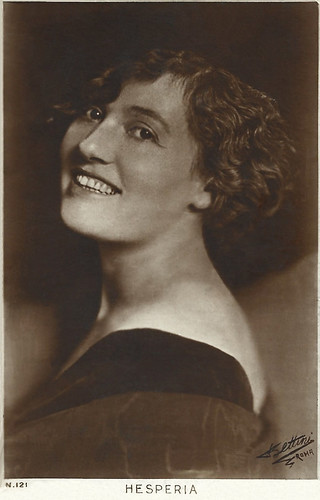
Italian postcard by Ed. Soc. Anon. Bettini, Roma, no. 121. Photo: Riccardo Bettini, Roma.
Hesperia (1885-1959), was one of the Italian divas of the silent screen. She often worked with director Baldassarre Negroni, who later became her husband.

Italian postcard by Ed. Soc. Anon. Bettini, Roma, no. 123. Photo: Riccardo Bettini, Roma.
Rina Calabria (?-?) was an Italian silent film actress, who mostly had supporting parts, first at Cines (1915), and afterward, more frequently, at Tespi-Film and Bernini-Film (1917-1921).

Italian postcard by TCR, no. 130. Photo: Riccardo Bettini.
Tina Di Lorenzo (1872-1930) was one of the 'grandes dames' of the Italian stage during the early twentieth century, nicknamed "Angelicata" and "La encantadora". In 1915 she also acted in two or three films. In 1901 she married reputed stage actor Armando Falconi, who would have a second career in Italian sound cinema.
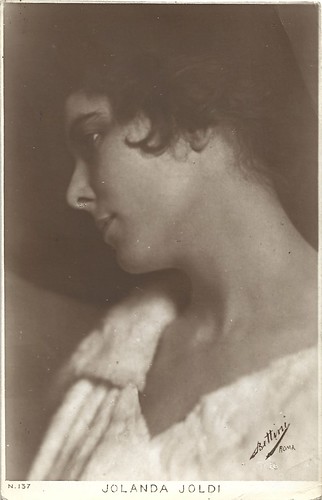
Italian postcard by Ed. Soc. Anon. Bettini, Roma, no. 137. Photo: Riccardo Bettini.
Jolanda Yoldy, aka Jolanda Joldi (?-?), was an Italian silent film actress, who acted in only three films. She debuted in early 1916 in a supporting part in the film Pierrette ne fa una delle sue (Felice Metellio, 1916). As the two leading actresses came from Vaudeville, this may have been the background of Yoldy too. She then had the lead as an innocent young girl opposite Ugo Gracci as a ruthless womaniser in Il sogno di un giorno (1916) by Augusto Genina. After losing her beloved, a mechanic, she falls into the clutches of a rich spender who abuses her. The film, even if of medium length only, looked promising, the Spanish press wrote in 1916. Yet, Yoldy had her last role the following year, a supporting part in the Suzanne Armelle vehicle Il fango (Adelardo Fernández Arias, 1917).

Italian postcard by Ed. Soc. Anon. Bettini, Roma, no. 142. Photo: Riccardo Bettini.
Thea or Théa, originally Teresa Termini (1898-?), debuted in Italian silent film with the film I Martiri di Belfiore (Alberto Carlo Lolli, 1915), a patriottic and anti-Austrian period piece, set in Mantova 1851. The leads were played by Enna Saredo and Achille Vitti, Teresa had only a minor part. In 1916 Thea had only one role in L'albergo nero (1920). So after I Martiri di Belfiore it took two years before she was again visible on the screen in Il segreto di Jack (Henrique Santos, 1917), in which Termini used her nom de plume Thea for the first time and in which she had the lead opposite a monkey called Jack.

Italian postcard by Ed. Soc. Anon. Bettini, Roma, no. 143. Photo: Riccardo Bettini.
Annibale Ninchi (1889-1967) was an Italian stage and screen actor and playwright, who became famous as the title character in Scipione l’Africano (1937) but also as the father in Fellini’s La dolce vita (1960) and 8½ (1963).
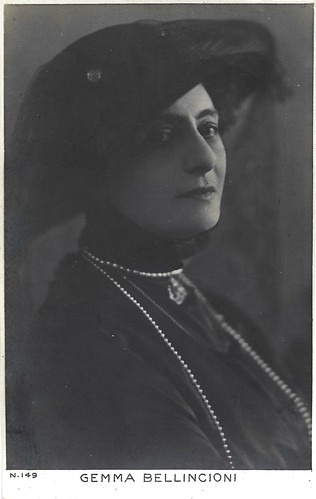
Italian postcard by Ed. Soc. Anon. Bettini, Roma, no. 149. Photo: Riccardo Bettini.
Gemma Bellincioni (1864-1950) was one of the best-known sopranos of the late 19th century. She broke through with her interpretations of the Italian veristic repertoire. She was known more for her acting skills than for the quality of her voice.
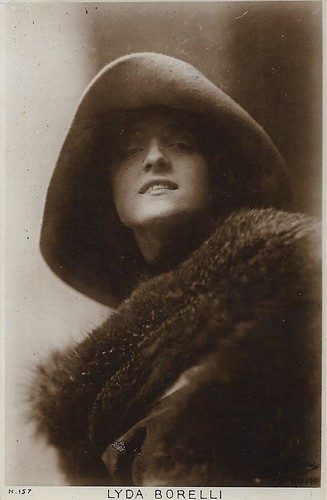
Italian postcard by Ed. Soc. Anon. Bettini, Roma, no. 157. Photo: Riccardo Bettini.
Lyda Borelli (1887-1959) was already an acclaimed stage actress before she became the first diva of the Italian silent cinema. The fascinating film star caused a craze among female fans called 'Borellismo'.
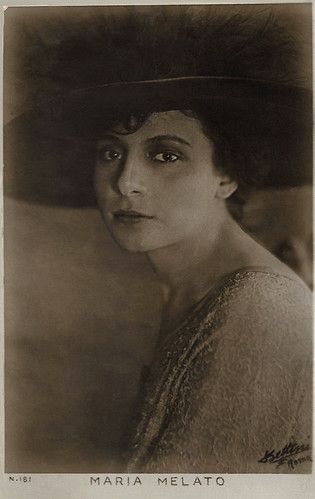
Italian postcard by Ed. Soc. Anon. It. Bettini, Roma, no. 181. Photo: Riccardo Bettini.
Italian actress Maria Melato (1885-1950) appeared in the theatre, on the radio, and in the cinema. Her films included Ritorno/Return (1914), Anna Karenina (1917), and Il volo degli aironi/The flight of the herons (1920). Unfortunately, all of her films are considered lost.
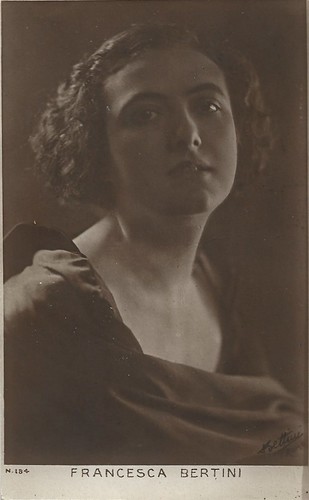
Italian postcard by Ed. Soc. Anon. Bettini, Roma, no. 184. Photo: Riccardo Bettini.
During the first quarter of the twentieth century, Francesca Bertini (1892-1985) was a majestic diva of the Italian silent cinema. She often played the 'femme fatale', with men devouring eyes, glamorous attire, clenched fists, and in opulent settings...
<

Italian postcard by Ed. Società Anonima Bettini, Roma, no. 201. Photo: Riccardo Bettini.
Italian film diva Leda Gys (1892-1957) starred in ca. 60 dramas, comedies, action thrillers and even westerns of the Italian and Spanish silent cinema. Her claim to fame came with the film Christus/Christ (1916), shot in Egypt and Palestine, where Gys performed the Madonna.
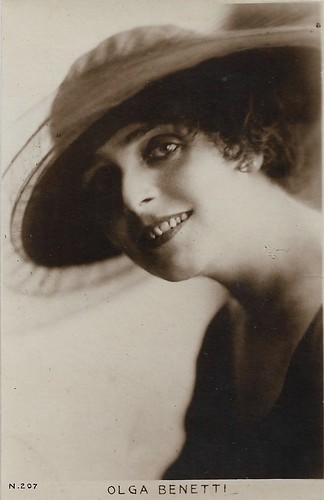
Italian postcard by Ed. Società Anonima Bettini, Roma, no. 207. Photo: Riccardo Bettini.
Olga Benetti (?-1958) was an Italian actress who acted in many films of the Roman film companies Cines, Celio and Caesar in the 1910s and early 1920s. She often performed opposite Francesca Bertini, Gustavo Serena and her husband Carlo Benetti (1885-1949).
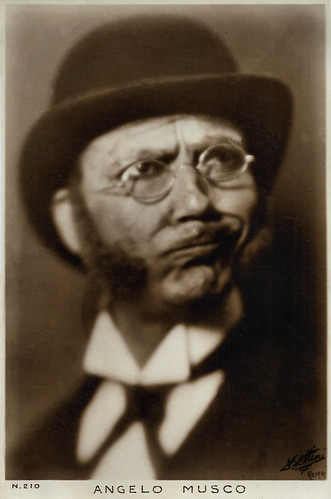
Italian postcard by Ed. Società Anonima Bettini, no. 210. Photo: Bettini, Roma.
Angelo Musco (1872–1937) was an Italian stage and screen actor. He was known for his comic abilities as well as for his carefully drawn psychological portraits. His film San Giovanni Decollato (Telemaco Ruggeri, 1917) was based on a play by Nino Martoglio which Martoglio had specially written for Musco. All the actors in the play repeated their roles in Ruggeri's film. Martoglio scripted the film too.
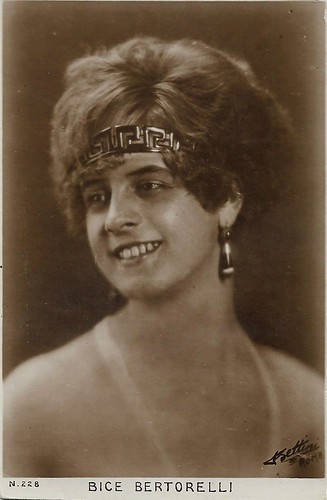
Italian postcard by Ed. Società Anonima Bettini, no. 228. Photo: Bettini, Roma.
According to IMDb and the reference books by Vittorio Martinelli, 'Il cinema muto italiano', Bice Bertorelli may not have been a film actress. Yet, the postcard series in which she appears is one of Italian film stars of the 1910s and 1920s. There is even doubt whether she has been a stage actress. Was she perhaps only a young Roman woman who just wanted to be portrayed like a star? Who knows more?
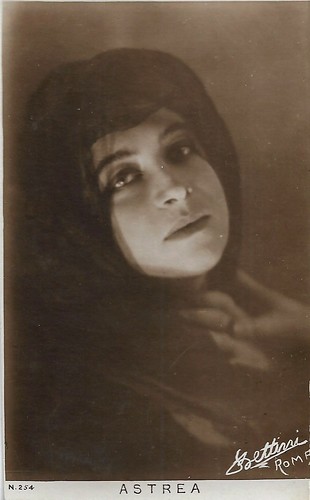
Italian postcard by Ed. Società Anonima Bettini, no. 254. Photo: Bettini, Roma.
Astrea (?-?) was the enigmatic female ‘forzuto’ of Italian silent cinema.

Italian postcard by Ed. Società Anonima Bettini, Roma, no. 265. Photo: Riccardo Bettini.
Mary Corwyn aka Mary Corwin and Maria Corvin (1895-?) was a Polish actress, active in Italian silent film. In 1916 she was hired by the Neapolitan film company Polifilms, where she acted in 7 films directed by Giulio Antamoro, and distributed by Lombardo Film. She became 'first actress' at Polifilm, thanks to her blue eyes and photogenic qualities. In 1918 journalist Edoardo Scarfoglio brought her to writer-producer-actor Lucio d'Ambra, who hired for his Roman film company Do-Re-Mi. She debuted there in Napoleoncina/L'épopée de Napoléonnette (D'Ambra, 1918), on a young girl smitten with Napoleon and his modern lookalike Dr. Toccasana. After four more films with D'Ambra, Corwyn returned to Naples for one more film, the Balzac adaptation Vautrin (1919). She then returned to act in Il girotondo degli undici lancieri (D'Ambra, 1919), produced by the new company D'Ambra Films. After two more films at Cines and Rosa Films, Corwyn left Italy in 1920, and nothing more is known of her.
Check out our earlier posts on Bettini here and here or view our Photo by Bettini album at Flickr.
No comments:
Post a Comment